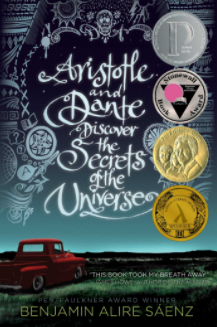We were recently asked to put together some data on LGBT books for a SalesData subscriber who was giving a presentation on the topic and, like so many pieces of information in SalesData, the results intrigued and puzzled us. So we decided to take it to the blog, where we'll provide the facts and we hope that you'll contribute to the discussion.
The data we were asked to provide had to do with the sales volume of LGBT books over time. So we identified those books using their BISAC subject headings and looked at the last seven years of data.
According to the 2015 list of BISAC subject headings currently being used by SalesData, there are LGBT BISAC codes for Young Adult (YA) and Juvenile books, but there aren't any for adult Fiction or Non-Fiction. Fiction does, however, have Gay and Lesbian ones. Unfortunately, Non-Fiction tends to be it’s own thing with LGBT books likely ending up in a number of categories such as Health & Fitness / Sexuality, amongst others. For these reasons, we've opted to stick with exploring the Fiction, YA Fiction and Juvenile Fiction categories. (For you BISAC nerds out there: The latest 2016 list of subject headings does have an expanded selection of LGBT codes, including a Fiction / LGBT category and Comics & Graphic Novels / LGBT, among others.)
Number of LGBT books
When looking at ISBN count (i.e., the number of distinct ISBNs with sales in each calendar year), we find the numbers for both YA and Juvenile LGBT books to be small but growing. When looking at Fiction / Gay and Fiction / Lesbian books, we find the numbers to be shrinking over the past seven years. (Note: "FICTION / Gay + Lesbian" is the total volume of sales for both the Fiction / Gay and Fiction / Lesbian categories.)
LGBT book sales
Then we looked at overall sales within the subjects and found that sales have generally been increasing over the past seven years. Interestingly, even with the limited amount of Juvenile and YA content available, we find that sales are still growing. With adult Fiction, sales are also on the rise, even with declining availability of titles categorized Gay or Lesbian.
Bestselling LGBT books
In 2015, we saw a large increase in Juvenile LGBT sales largely due to the success of Raziel Reid’s When Everything Feels Like the Movies. For YA in 2016, titles like Benjamin Alire Saenz’s Aristotle and Dante Discover the Secrets of the Universe, Becky Albertalli’s Simon vs. the Homo Sapiens Agenda and Meredith Russo’s If I Was Your Girl were the big sellers, and these books are continuing to sell well into 2017 (Saenz’s book is from 2014). Perhaps this is a sign that demand is exceeding what's available in the market?
I personally expected to see greater growth in numbers of ISBNs (particularly in adult Fiction) and also much higher sales. As we all know, the amount of content available to buy will directly influence the volume of sales in the category. (You need to have books for people to buy books.)
Breaking out some of my former library cataloguing training, could some of this have to do with the nature of LGBT materials changing and the “aboutness” of the content? Could it be that more books are featuring LGBT characters but the essence of the story is not necessarily about being LGBT? Look at the awesomeness of Captain Underpants: He has a husband but it isn’t the focus of the story, nor would that fact alone necessarily classify the book under an LGBT BISAC code. Similarly, are lesbian romance books simply being classified under the Romance BISAC subject heading?
Another option is that there is a declining availability of LGBT materials even though the demand for diverse content is on the rise. If you search for "LGBT books" you will find list after list of LGBT book suggestions and recommendations. And there is no shortage of recent discussions and articles about diversity in publishing. However, doing another search for “LGBT and publishing” gets you a list of results that pertain to “LGBT book publishing companies” or “five small LGBT presses you may not have heard of” indicating that LGBT publishing may be niche rather than something integrated into larger firms.
We haven't even touched on the fact that four of the top 10 most-banned titles for 2016 were LGBT titles. And then there was all the media attention over the call to strip the Governor General's Literary Award from When Everything Feels Like the Movies "on account of the book’s so-called vulgar content (primarily having to do with sexualized imagery)".
The sales figures above may not be staggering but they do tell an interesting story; more than that, it's an important story — one that deserves a lot more consideration and attention. Let us know your perspective on the issue and whether your publishing firm is doing something to feature more LGBT content and increase availability in the market.








